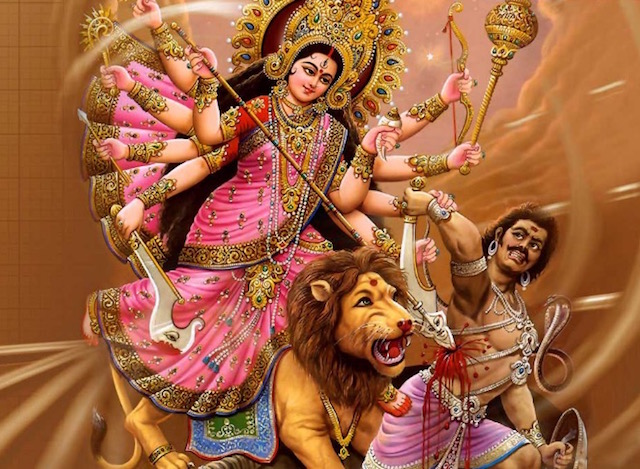
*Eleditor’s note: Astrology isn’t a religion. We’re not sure it’s a science, either. It’s magic, maybe. But, as with feng shui, say, things affect things. So as long as we don’t go blaming our problems on the stars, as long as we assume responsibility for our own actions…well, hell, a little auspicious coincidence and applicable wisdom can’t hurt. And so, with that grain of salt…enjoy!
~
*Vedic Astrology, or Jyotish, is one of the oldest sciences on the planet and considered a relative of astronomy. It is an important and valuable part of the ancient Vedic texts. This complex, logic-based and also intuitive science, has survived thousands of years in India’s Vedic tradition and is still considered a highly valuable tool of guidance and life insight. It is not a religion, but rather a philosophical understanding of human and cosmic existence. In Sanskrit, jyoti means light. Essentially, the study of jyotish is the study of light and how we interact with the cosmic light—within us and within the cosmos. Vedic astrology, or the sidereal approach to astrology, casts charts differently than Western, or Tropical astrology. The meanings, implications and purpose of jyotish is therefor different, as are the details used for prediction and the indications given below.
~
The sacred nine-day celebration of Shardiya Maha Navaratri begins on Saturday, October 1st, as the moon shifts into the first tithi of the waxing moon cycle.
Nava means nine and ratri means night in Sanskrit. Each day and night of this powerful junction point correlates to the epic battle between the goddess Sri Devi Mahatmyam and the demon Mahishasura. Maha Devi Mahatmyam is connected to both Durga and Shakti, powerful forms of divine feminine energy that awaken, clear, transform and heal. Sri Devi is understood to be the supreme creation power of the universe, the Tridevi, or triple goddess, as she expresses the creation, sustaining and destructive energies that perpetuate all forms of life.
During the nine-day Navaratri celebration, the battle between light and dark forces enlivens, ending on the 10th day with Victory Day, Vijaya Dashami. This battle between light and dark, good and bad, masculine and feminine, transformation and healing, is taking place within all beings at this sacred junction point. It is a time to heal and combine polarities within.
The Navaratri celebration is an expression of what is taking place within nature, through the laws that govern nature, marking an important transition within us and around us. These important junction points (known as a gap, or sandhi in Sanskrit) happen multiple times a year, however, the Shardiya or Maha Navaratri, junction point is considered the most powerful. This is a death cycle for both Northern and Southern hemispheres—as life is being called into silence in the north, and called into action for the south. In either case, doors are opening and closing.
Navaratri occurs twice a year—-in the gap seasons of spring and fall.
In the spring, Navaratri marks the “waking up” of the devis or the goddesses; the aspects of natural law that enlivens growth, abundance, prosperity, learning, well being, change and transformation. In the fall, Navaratri invites in destruction, removal, change, transformation and healing. The goddesses Durga, Saraswati and Lakshmi symbolize these parts of life and nature, while also being parts of our own innate being. The three of them together represent our wholeness, the trinity of life, alive in and around us. These three goddesses also connect to Shakti, the goddess who gives the spark of life to every being, to nature and to existence.
Fall Navaratri, or Maha Navaratri, is by far the most potent as it brings deep transformation and the ability to remove, destroy, release and transform our darkness into light. The holy trinity of goddesses supports this process and allows us to let go of what needs to be released for greater nourishment. As we let go of our darkness, an increase of light and wisdom can take its place. This process is marked by Durga’s powerful battle against the demon Mahishasura. On the 10th day, she destroyed him and was victorious. This day is called Vijaya Dashami (Dashami is the 10th lunar day of the moon cycle, connected to dharma).
The dates for this year’s Maha Navaratri celebration are Saturday, October 1st to Tuesday, October 11th.
Though the entire Navaratri celebration is dedicated to Durga and her many forms (including shakti), many honor the expressions of her power through Lakshmi and Saraswati as well.
This is a nine-day celebration that is divided into three parts.
The first three days are dedicated to the goddess Durga. Her warrior spirit cleanses, shifts, uproots, changes and transforms. Think of her as tilling the soil, prior to planting seeds. The next three days of celebration are dedicated to Lakshmi. Her abundance, nurturing and wealth offer nourishment and support to us on all levels of life. Health is the ultimate wealth and Lakshmi supports this. Finally, the last three days are dedicated to the goddess, Saraswati. She gives us knowledge, understanding, wisdom, creativity and artistry. She is the rasayana (or healing balm) to close this sacred nine day celebration. Together, these three goddesses bring wholeness, renewal and the life giving offerings of Shakti. This creative life-force energy is truly what inspires life, living and abundance.
To connect with the goddesses more closely, make special offerings on your altar for them during these nine days. You can also dedicate your actions and intentions to them for greater communication.
Connecting to fire and stoking the internal flame (or agni) can be valuable for the first three days of Durga. You may wish to write intentions that focus on empowerment and action steps for the coming months. Using self development tools to transform negative thoughts and mental body stories will be well supported at this time. During the three days of Lakshmi, bring sweets and flowers to your altar, cook yourself nourishing foods and decorate and adorn yourself. This is a time to diligently focus on self-care. For the final portion of Navaratri, dedicated to Saraswati, focus your energy, efforts and intentions on music, art and poetry. Use creativity, artistry and embodiment resources for grounding and landing in your intentions. Use one of my creative rituals for support with this process.
On this first day and night of Navaratri, notice what’s arriving. I have experienced that the first three days of Navaratri initiate the changes and transformations you are working with in this release cycle. Often we must confront challenges and obstacles as a result. More nourishment and support is coming, but we can’t receive it without this important step.
What is arriving? What parts of your personal mythology are showing up as a mirror for you? How can you clear more space within? Let Durga’s fierce warrior energy initiate and provoke awareness.
As you deepen your intention for this Navaratri celebration, find meaningful rituals for yourself that bring you closer to spirit. Spend time in nature and in meditation. Listening to Durga mantras right now is excellent for inviting in her presence. Traditionally, listening to Chandi Path recitations is also encouraged.
During this sacred and potent time, treat yourself like the goddess you are and share your abundance with others. May we each remember our true abundant nature and our immense creative life giving energy!
Relephant:
Author: Saraswati
Image: Opengavel
Editor: Ashleigh Hitchcock

 Share on bsky
Share on bsky






Read 1 comment and reply